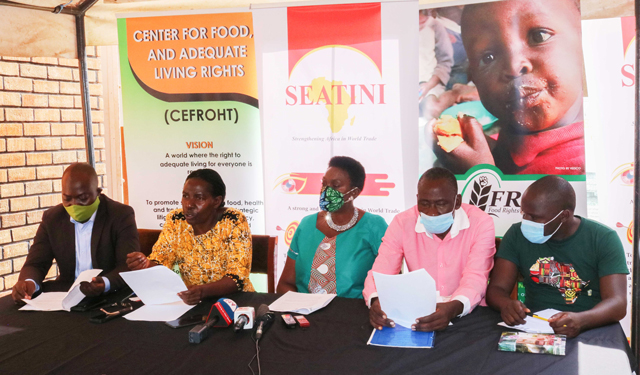
Kampala,, Uganda | Julius Businge | As players in maize trading between Uganda and Kenya workout modalities for improving trade relations, questions remain on whether authorities can walk-the talk.
On March 11, Kenya announced the lifting of a ban on imports of maize grain from Uganda and Tanzania with strict adherence to standards.
Earlier, when East Africa’s largest economy announced the ban, it cited high levels of mycotoxins, poisonous germs, in the maize imported from the two countries.
But it emerged later that Ugandan authorities had not been consulted when the decision was being made.
Under the new terms, Kenya wants dealers to present the certificate of conformity indicating that the aflatoxin levels comply with the maximum required levels of 10 parts per billion.
That Kenyan traders importing maize from Uganda to Kenya would be required to also have a certificate of origin from the counties of produce before they get clearance at the border points.
Traders that spoke to The Independent immediately after the ban was lifted, welcomed the move, but asked the two governments to walk the talk.
Other players like the Southern and Eastern Africa Trade Information and Negotiations Institute – (SEATINI) are suggesting that going forward, there have to be consultations involving the concerned states and the relevant organs of the East African Community with a view of arriving at an amicable solution in the spirit of regional integration.
The negotiations also applies to other drastic actions which have been taken by other partner stats for instance, the Rwanda-Uganda boarder closure.
“Partner states should be cautious of the actions taken and their impact on the people,” Jane Nalunga, the executive director for SEATINI, said on March 14.
Nalunga, who was flanked by several members of civil society, also suggested the need to strengthen the institutions of the EAC to address the trade disputes.
Internally, she said, there is need for increased role of government in development, monitoring and enforcement of standards and ensuring that value chain actors are trained.
She also called for an increase in budget allocations to the ministry of trade industry and cooperatives, Uganda National Bureau of Standards, Uganda Export Promotions Board and the ministry of agriculture animal husbandry and fisheries in a bid to improve standards.
In a detailed statement, SEATINI suggested more; there should be a close working relationship between the ministry of trade and that of agriculture to ensure that producers adhere to the required standards; that government should ensure that non-adherence to standards is punished and that there is minimum prices for agricultural products.
The government should also put in place supportive infrastructure such as drying facilities, stores.
There should be due processes at the border and certified exporters should have standard certificates, rules of origin and export certificates.
Rethinking of the neoliberal policies of liberalisation and privatisation in line with the role of the state is another idea they are selling to the government.
Although official maize imports have been declining in recent years and they have tended to fluctuate sharply over the years, Kenya’s maize imports remain high.
In 2017, for example, it imported 1.4 million tonnes of maize; the highest volumes in the last 10 years. The lowest was 100,000 tonnes in 2010. In 2020, it imported 400,000 tonnes. But the year before that it had imported just 270,000 tonnes.
Most of the maize that enters Kenya comes from Uganda and most of the imports are informal and undocumented, something that SEATINI and other stakeholders think must be reversed.
 The Independent Uganda: You get the Truth we Pay the Price
The Independent Uganda: You get the Truth we Pay the Price


